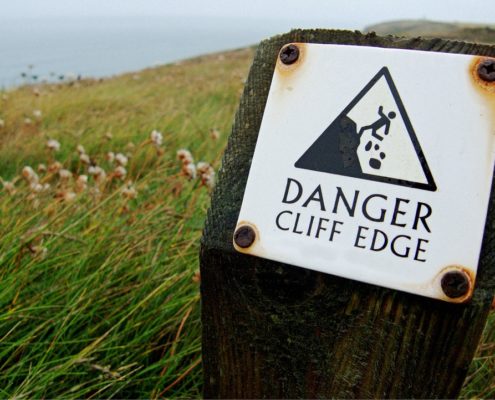The End of Escape Rooms
Don’t worry, I’m not talking about the end of the escape room industry. Instead, I’m referring to what happens at the end of an escape game.
In our experience, the vast majority of escape rooms have no real ending. Often you’re greeted by a member of the staff who either congratulates you on successfully escaping or offers you condolences for not quite making it out. The game itself, however, ends abruptly.
To me, an escape room without an ending is very jarring. For the last hour I’ve been amped up on the adrenaline that comes from trying to beat the clock, full of the excitement that comes from overcoming a challenge, and brimming with curiosity to see how it all plays out. I’ve just spent a significant amount of time building up emotional pressure as I get closer and closer to the finish line and then suddenly . . . nothing.

Locurio is, at its heart, an immersive experiences company, and our goal is to always justify our settings, challenges, and puzzles in the context of some narrative. We think that this provides a more cohesive experience that is easier to lose one’s self in and requires a little less suspension of disbelief. Our hope is that you’ll feel transported to another world, a far away place, full of magic and mystery. For this to provide a lasting impression of reality, however, we also need to make sure that we bring you back. Just as the denouement in literature brings normalcy back into the characters’ lives, a good game ending serves as a bridge between worlds for players, ushering them back gently and providing narrative closure.

Another thing to consider is the fact that escape rooms have two different endings: one in which the players escape and one in which they don’t. Since our goal is to entertain our players, it’s very tempting to focus on the winning scenario when designing a room because it’s more fun. When players are successful they get to experience the entire room as intended, they solve all of the puzzles, and they are the heroes of the story. They’re happy, we’re happy, everybody wins! But we can’t ignore the other ending. Those players who fail to escape (which is probably most of them!) miss out on the sense of accomplishment that comes with escaping. Without this, their last impression of the room may very well be one of disappointment.
If you’re designing an escape room or any immersive experience I encourage you to consider the ways in which it ends, how these endings affect your players, and what sort of lasting impressions they leave your players with.
So what do you think? Have you seen a game ending that you particularly liked? Do you not care whether or not there is an ending? How do you feel when an escape room just . . . ends?



Leave a Reply
Want to join the discussion?Feel free to contribute!